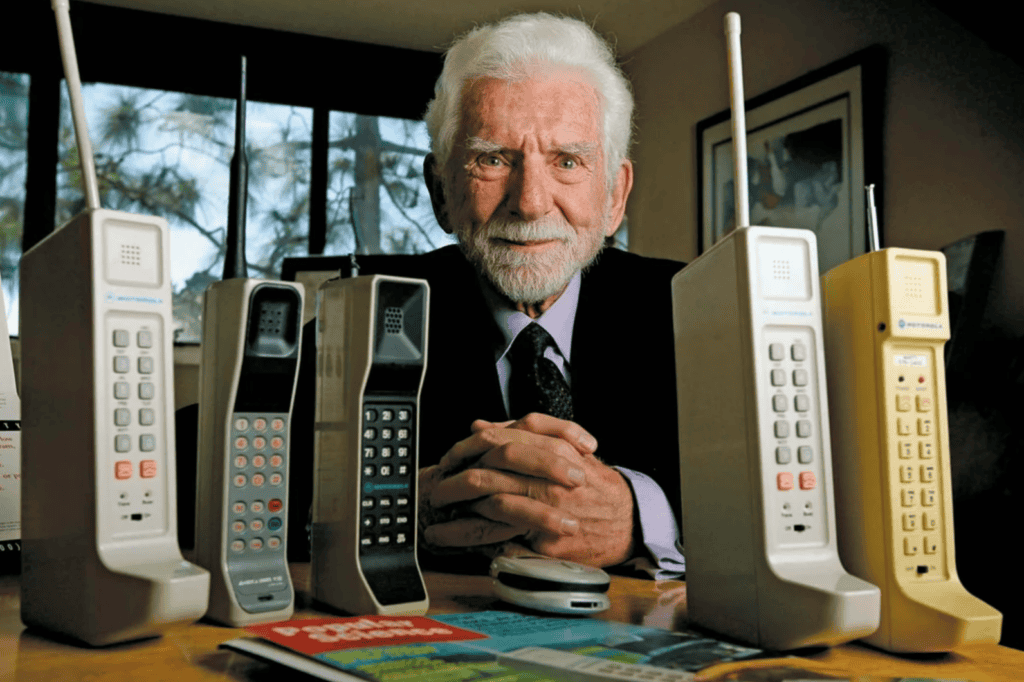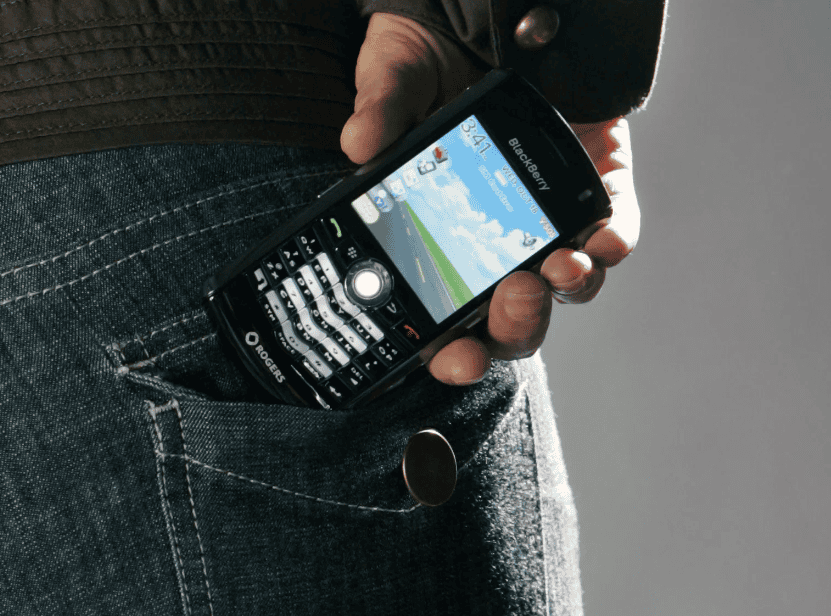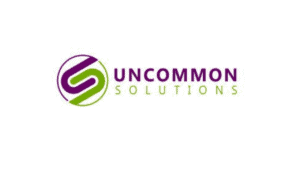Over the past four decades, sales prospecting has transformed dramatically, shaped by technological advancements, shifts in consumer behavior, and evolving market dynamics. Let’s explore the progression of sales prospecting from the early 1980s to the present, highlighting personal stories, technological innovations, and key statistics that illustrate the profound changes in the field.
The 1980s: The Decade of Personal Touch
“You can have everything in life you want, if you will just help enough other people get what they want.” Zig Ziglar – President of Zig Ziglar Corporation
In the early 1980s, sales prospecting relied heavily on personal relationships and face-to-face interactions. Salespeople spent their days making cold calls at their desks on corded phones, either rotary dial or touch-tone. These phones did not have or possibly only had simple screens (no caller ID) and could not send texts.
A veteran salesperson, John Thompson, recalls, “It was all about who you knew and how often you could get in front of them. We carried Rolodexes (invented in 1956) stuffed with business cards and dialed phone numbers all day.”
Visiting potential clients usually required an appointment, a map, and a tank of gas. Networking was done at organized events, conventions, private clubs, and golf courses.
Direct mail in the ’80s stood as the cornerstone of marketing strategies, a vital tool for companies big and small. This era was characterized by the anticipation and excitement that physical mail could generate. Customers looked forward to receiving catalogs with the latest offerings, glossy flyers that caught the eye, and personalized letters that connected them with their favorite brands. Direct mail had a tangible quality that digital communications struggle to replicate, creating a personal touchpoint between businesses and their clientele.

The effectiveness of direct mail during this period wasn’t just anecdotal; substantial engagement and conversion rates backed it. The physical act of receiving, handling, and browsing through mail items lent a sense of credibility and substance to the marketing messages they carried, often resulting in higher response rates compared to other media channels available at the time.
Flash-forward to today, in an era dominated by digital channels—social media, email, and mobile marketing—where the immediacy and convenience of digital communications have taken center stage, one might wonder about a modern-day renaissance. With its tactile experience, direct mail can cut through the noise of digital channels, offering a novel way to capture attention. Do you think it could make a comeback?
The 1990s: The Golden Era of Cold Calling
“Begin always expecting good things to happen.” Tom Hopkins
As the internet took hold in the ’90s, it changed how we communicated, conducted business, and were entertained. Email started gaining popularity, and database marketing revolutionized prospecting. Companies now had access to large databases, enabling targeted campaigns and newsletters. Only 15% of American households had computers in 1989, but this more than doubled in the ’90s. Sarah Lin, a marketing director from the late 90s, notes, “Email changed everything. We went from guessing who might be interested to knowing we had a list of engaged subscribers eager to hear from us.” The introduction of email marketing in the 1990s saw conversion rates spike to as high as 5% in targeted campaigns.
Our vocabularies received new words like SPAM, Dot-com, Opt-out, and ISP.
Fun fact: The first commercially available cell phone, the Motorola DynaTAC 8000x, was introduced in the US in 1983 and cost $3,995. But only a short 10 years later, cell phones were starting to pop up everywhere!
Cold calling in the ’90s has been classified (and immortalized in movies) as the most successful selling interaction of its time. It was a classic churn and burn, spray and pray approach where it didn’t matter if you burned a few along the way.

Cold calls were a prevalent method for initiating sales and often involved a straightforward pitch that aimed to quickly capture the potential customer’s interest. Here’s an example of a typical canned pitch from a cold call in the 1990s, tailored for a brokerage firm offering stocks.
Salesperson: Good morning/afternoon! May I speak with [Prospect’s Name], please? (you’ve got to get through the receptionist or main switchboard)
[After being connected to the right person]
Salesperson: Hello [Prospect’s Name], I’m [Your Name] with [Brokerage Firm Name]. I’m reaching out today because we’ve noticed some exciting stock market trends that could interest investors like yourself. We’ve recently helped our clients capitalize on these movements, and I’d love to share this insight with you before you miss out.
We’re seeing significant opportunities in [mention specific sector or stock, e.g., technology or renewable energy stocks]. Our latest analysis suggests that [Sector/Stock] is poised for substantial growth over the next quarter due to [mention a relevant event, innovation, or economic indicator].
I want to discuss how this aligns with your investment goals and how we can increase the performance of your portfolio. We pride ourselves on personalized service and strategic advice tailored to each client’s unique financial situation.
Here’s what I’m going to do. I’ll have my secretary schedule a brief call or meeting this week to go over this in more detail. I can prepare a customized portfolio analysis for you. You don’t want to miss out on this opportunity, do you?
Business networking evolved with the introduction of personal computers and the Internet. Networking events became more widespread, and professional organizations began to hold more formal events and conferences to bring together business owners and executives nationwide. The rise of technology also enabled professionals to connect and network online through email, online forums, and message boards.
Trivial Pursuit: What was the first Internet transaction? (Keep reading to find out)
The 2000s: The Surge of Social Media and CRM Technology
“Selling breaks rapport, educating builds it. Stop selling and start educating.” Chet Holmes
Getting hold of people through random cold calls became increasingly difficult with each passing year, which created a need for finding companies that were not only a good fit as a prospect, but were also ready for a salesperson’s product or service offering. Also, starting in the early 2000s, the rise of caller ID gave prospects an upper hand to avoid salespeople.
The 2000s witnessed the growth of social media platforms like LinkedIn (started in 2002), which allowed salespeople to network and prospect in new ways. In 2006, the term Sales 2.0 was coined after researchers examined the relationship between buyer and seller. They found that a sale is more likely to occur when there are similarities between the two. It soon became known as social selling.
Not too long ago, salespeople collected business cards from trade shows, wrote down all the company names, and researched membership lists from annual reports of different types of associations for prospect information. In the early 2000s, the rise of online web directories gave salespeople instant access to millions of companies. Even though the information was limited to basic company information, the concept of an online directory was a revolutionary idea laying the groundwork for an industry that is an integral part of our daily lives.

Customer Relationship Management (CRM) systems also gained speed due to the Internet. The company Salesforce started in 1999 and delivered its software through a new model called software-as-a-service (SaaS) to make the CRM less expensive to implement and use. According to Michael Renner, a CRM consultant, “CRM systems provided a structured way to follow up on leads and manage relationships at scale. This was a game changer for sales productivity.” By the 2000s, companies using advanced CRM systems saw a 10% increase in sales productivity.
The 2010s: The Age of Automation and Analytics
“It’s a dialogue, not a monologue, and some people don’t understand that. Social media is more like a telephone than a television” Amy Jo Martin – Founder and CEO of Digital Royalty
By the 2010s, automation and analytics had begun to dominate sales prospecting. Tools that automated email sequences, scored leads, and provided detailed analytics helped sales teams optimize their efforts. A sales operations manager, Anna Choi shares, “Automation allowed our team to focus more on closing deals and less on the mundane tasks. We could track everything, which meant we could continually refine our strategies.”
This decade was defined by a shift in communications from traditional media and tactics to a worldwide conversation that flowed faster and farther than anyone could have imagined. Social media tools like Twitter, Facebook, blogs, online videos and mobile strategies helped companies find their niche and target and sell to their ideal customers.
As for the best techniques for prospecting at the time, check out this blog from 2012. Although good advice for the decade, sales prospecting ideas #2 and #3 have not aged well!
The 2020s: AI Integration and Personalization
“Humanize the sales process or perish.” Steli Efti – CEO of Close
The current decade is defined by the integration of AI and the push toward hyper-personalization. Sales prospecting continues to evolve with a stronger emphasis on advanced analytics. These technologies predict behaviors and empower sales teams to understand deeper nuances of buyer interests, engagement levels, and the importance of personal connection and empathy in modern sales. This analytical approach supports a more strategic allocation of resources, ensuring that sales efforts are concentrated where they are most likely to yield results.
Social selling has become a critical aspect of sales prospecting in this decade. Platforms like LinkedIn and Twitter are utilized for networking and directly engaging potential clients through content that adds value, addresses pain points, and initiates conversations. This method has proven effective in building trust and establishing expertise before a sales call is ever made.
AI tools can now predict buying behavior, personalize communications at scale, and identify sales opportunities based on vast amounts of data. A tech startup founder, Tom Briggs, explains, “AI isn’t just a tool; it’s our main engine for prospecting. It tells us who to talk to, when, and about what.” Customer Relationship Management (CRM) systems have been enhanced with AI capabilities to offer more precise insights into customer data. AI-driven CRMs facilitate a more dynamic understanding of customer journeys, enabling sales teams to tailor their strategies to individual prospects with unprecedented precision. Today, AI-driven prospecting tools have been shown to increase lead conversion rates by up to 50% in some industries.

Adopting sales enablement tools is designed to equip sales teams with the right content, insights, and data at the right time. These tools streamline the prospecting process and enhance productivity by providing seamless access to information crucial for personalized client interactions. Interestingly, only 35% of sales teams actively track the effectiveness of their content, indicating a major opportunity for optimization.
This decade has witnessed a significant transformation in the workforce, with remote work becoming a mainstream option across industries, including sales. This shift has been facilitated by technological advancements that enable seamless communication and collaboration from anywhere in the world. Sales teams can now engage with prospects, conduct virtual meetings, and close deals without physical presence. This flexibility has expanded the talent pool for companies and allowed sales professionals to achieve a better work-life balance, leading to increased job satisfaction and productivity. Remote work capabilities are redefining traditional sales roles and opening up new possibilities for how sales operations are structured and executed.
With the increased reliance on data and AI, there has also been a heightened focus on ethical sales practices and data privacy. Companies are now more accountable for gathering, using, and protecting customer information, leading to more transparent data practices and a boost in customer trust.
By leveraging AI integration, focusing on personalized customer interactions through social selling, utilizing sales enablement tools, and addressing ethical and privacy concerns, sales prospecting in the 2020s is becoming more efficient and customer-centric than ever in history.
Sales Prospecting Has Seen It All
Reflecting on the transformation of sales prospecting from the tactile strategies of the 1980s to the AI-driven, hyper-personalized approaches of the 2020s, it’s clear that sales prospecting has seen it all, from rotary phones to AI-powered CRM systems. Implementing sales techniques today could benefit from a blend of historical understanding and current cutting-edge techniques.
At Topaz Sales Consulting, we’re equipped to guide your team through the complexities of modern sales prospecting. Embrace the future of sales with Topaz Sales Consulting—where we don’t just respond to changes; we help you lead them. Contact us today to transform your sales prospecting and seize the opportunities of this decade and beyond.
What was the first Internet transaction?
Answer: The first Internet transaction was in 1994 and is often reported to be the purchase of the CD “Ten Summoner’s Tales” by Sting.
This transaction was conducted as a test of the online shopping system.






